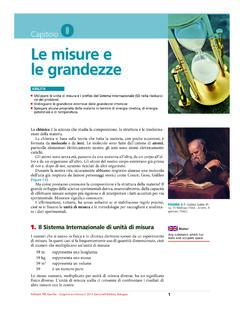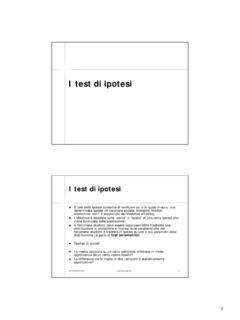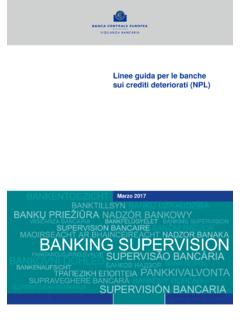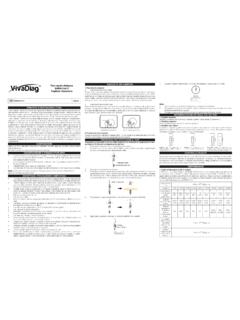Transcription of Cognitive Learning I: Understanding Effective Thinking
1 - 1 Chapter 5 Cognitive Learning I: UnderstandingEffective ThinkingThis chapter will help you answer the following questions about your learners: How can I teach my learners to become good thinkers? What Cognitive Learning strategies can help my learners remember what I teach? What Cognitive Learning strategies can help my learners improve theircomprehension of what they read? Which is more important to how much my learners are able to learn: priorknowledge or intelligence? How can I use the information processing model of Thinking to betterunderstand how Learning occurs? What are some ways of getting and holding my learners attention?
2 What teaching strategies can I use to enhance my learners reception,availability, and activation of the information I present? Do my learners have to learn in orderly, sequential ways or can they usedifferent sources of information simultaneously to construct their ownmeanings? - 2 Is my learners intelligence fixed, or is it made up of many specific abilities thatI can improve through instruction?In this chapter you will also learn the meanings of these terms:automaticitycognitive strategiescomprehension monitoringdecay theorydeclarative knowledgedisplacement theorydomain-specific knowledgedual-coding theoryelaborationgeneral knowledgeimmediate memoryinformation processing modelinterference theorykeyword methodlong-term memorymetacognitionorganizationparallel distributed processing modelprocedural knowledgepropositional networksrehearsalschema theoryworking - 3 Many years ago in the village of Gidole in southern Ethiopia, there lived anold man and his three sons.
3 The old man knew that he had only a few moreyears to live and he wanted to make sure that his property and possessionswere left in good hands. He decided that he would leave all his worldlygoods to the most intelligent of his three sons. The problem was finding outwhich son was the most day he called his three sons to his bedroom and gave them each adollar. He told them to go out and buy something with the dollar that wouldfill the entire bedroom. Then he told them that the son who could do thiswould inherit all his oldest son, Girma, went to the marketplace and bought as much hayas a dollar could buy. He carted it to the house and brought it to his father sroom.
4 But the hay filled only a corner of the second eldest son, Abebe, looked at the space taken up by the hay,thought a little, and ran out into the countryside. He bought as many largebanana leaves as a dollar could buy. He carried them in a cart to his father shouse and brought them to his father s room. Alas, the banana leaves filledonly half of the youngest son, Tesfaye, looked at the space taken by the hay. Helooked at the space taken up by the banana leaves. Then he looked at thedollar in his hand. His eyes roamed slowly over the entire room. He thoughtand thought. Then a smile came over his face. He ran to the market andpurchased a candle and a returned to his father s room and drew the curtains.
5 The roombecame dark. He placed the candle on a small wooden table next to hisfather s bed and lit it. The light from the candle filled the entire room!(Adapted from Bachrach, 1966) - 4 Tesfaye is a good thinker. Cognitive psychologists might call him a good information processor. What makes someone a good thinker or informationprocessor? A precise answer to this question would require psychologists toexamine someone like Tesfaye in the act of Thinking and uncover the precise steps,mental structures, and processes involved in complex human Thinking . Since thesemental structures and processes cannot be observed directly, psychologistsinterested in the study of Thinking use metaphors and models to explain whatcannot be are some of the metaphors and models that Cognitive psychologists havecreated to explain what good thinkers do?
6 First, they would say that good thinkersuse Cognitive strategies. An example of a Cognitive strategy might be: First try topicture or imagine the problem and picture or imagine several solutions. Undoubtedly Tesfaye did this when he scanned his father s room trying tovisualize how a dollar s worth of anything could fill an entire room. Anotherstrategy might be: Don t jump to any conclusions. Test out what you think is theanswer. Unlike his brothers, Tesfaye thought about the solution to the dilemmaproposed by his father and visualized the solution before running out andpurchasing the candle and match. There are many other Cognitive strategies usedby good thinkers to solve problems that you will learn about in this and thefollowing psychologists also tell us that good thinkers are knowledgeable aboutand aware of their own Thinking .
7 They recognize when they are in a situation thatdemands the use of Cognitive strategies. Good thinkers have Cognitive strategiesfor finding out and organizing information and remembering when and where touse such strategies. In other words, good thinkers think about their own psychologists call this aspect of good Thinking metacognition. IfTesfaye had thought to himself, My father has challenged us with a real - 5teaser. I ll have to use some Thinking strategies to solve this problem. What s oneof the first things I should do? he would be engaged in metacognition. In thischapter you will learn how good thinkers use metacognition to regulate, control,and monitor their use of Cognitive strategies (Pressley, 1995).
8 Thus good thinkers possess strategies for Thinking as well as for regulating theuse of those strategies. In addition, good thinkers have a lot of information todraw upon to enrich their Thinking . Each has a storehouse of facts, concepts, rules,principles, and other associations that are built up and organized from birth psychologists use a number of different metaphors to describe thisstorehouse of information: knowledge base (Bloom, 1985); declarative knowledge(Gagn , Yekovich, & Yekovich, 1993), and domain-specific knowledge (Chi,1978; Chi, Glaser, & Farr, 1988). Good thinkers in the fields of science,classroom teaching, auto mechanics, chess, sports, or medical diagnosis all haveextensive stores of organized information to draw upon.
9 We re unsure whatspecific knowledge base Tesfaye drew upon to solve his father s riddle. But at aminimum, he needed to know what a dollar could and could not buy, how muchspace a dollar s worth of anything uses, and the difference between the area of aroom and its volume. In this chapter you will learn what Cognitive psychologistshave discovered about the importance of using what you know to thinkers possess the ability not only to learn information and strategies,but also to recall this information on demand and coordinate the complex waysknowledge, strategies, and metacognition interact. Cognitive psychologists havecreated several models to explain the processes that good thinkers use in the act ofproblem solving.
10 We will study several models of complex human cognitivefunctioning: the basic information processing model (Gagn , Yekovich, & - 6 Yekovich, 1993), and parallel distributed processing, or new connectionist models(Bechtel & Abrahamsen, 1991; Rumelhart, 1992).By now you are probably asking yourself about the connection between goodthinking and intelligence. After all, Tesfaye s father developed what he thoughtwas a type of intelligence test he wanted to find out which son was mostintelligent. Is good Thinking , or good information processing, synonymous withintelligence? In the final section of this chapter we will discuss the relationshipbetween information processing and intelligence (Gardner, 1993; Sternberg,1989).







